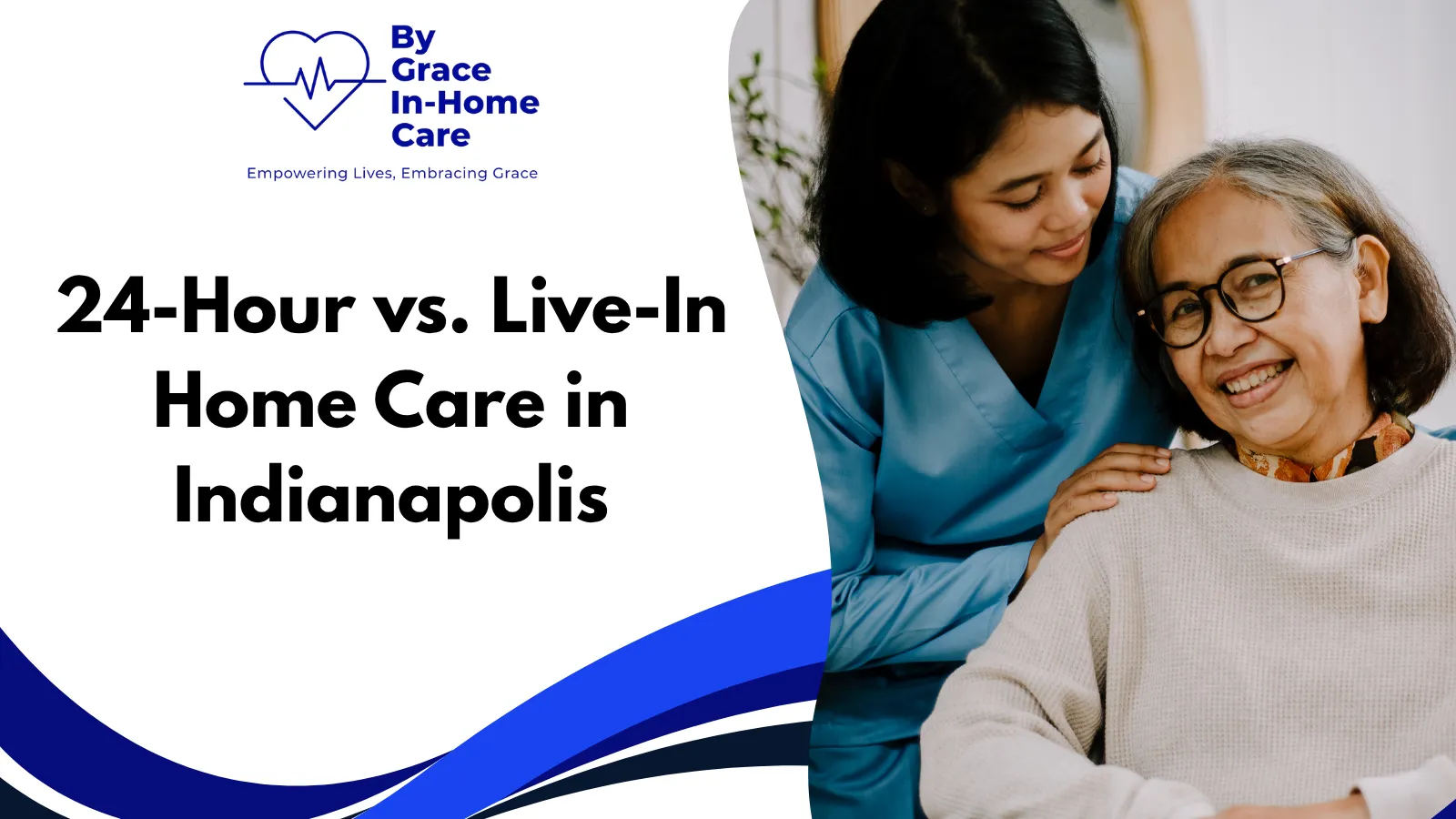What This Blog Covers
Choosing the right level of care for a senior loved one is never easy. If your family is weighing the decision between 24-hour home care and live-in care, understanding their differences can help you make the best choice. This guide breaks down how each type of care works, their costs, and what you should consider when hiring in Indianapolis.
Understanding 24-Hour Home Care Basics
In a 24-hour care arrangement, two or more caregivers work rotating shifts to ensure constant supervision. This type of care is ideal for seniors with significant needs—whether they’re recovering from surgery, managing dementia, or prone to nighttime wandering.
Key Benefits of 24-Hour Care:
- No gaps in supervision, even overnight
- Immediate help in case of emergencies
- Reduced family stress and burnout
Many families choose this option when their loved one has conditions that require continuous monitoring and quick response.
How Live-In Home Care Is Structured
Live-in care provides one dedicated caregiver who stays in the home for extended shifts, usually 24 hours at a time, with mandatory sleep and breaks. Unlike rotating shifts in 24-hour care, live-in caregivers sleep at night and require a private space.
Live-In Care Advantages:
- Consistent caregiver building long-term trust
- Lower overall costs compared to 24-hour care
- Companionship and emotional stability
This option suits seniors who need regular help but are stable enough overnight without intensive assistance.
Comparing the Two: Which Is Best?
| Feature | 24-Hour Care | Live-In Care |
| Supervision | Constant, awake caregivers | One caregiver sleeps overnight |
| Staffing | Two or more rotating professionals | One main caregiver |
| Cost | Higher due to multiple shifts | More affordable, fewer hours billed |
| Overnight Support | Full awake support available | Limited unless emergencies arise |
| Caregiver Fatigue | Low, due to shift rotation | Possible, needs rest periods |
Choosing the right model depends on your loved one’s needs. Seniors with memory loss, mobility issues, or post-surgical recovery often benefit more from 24-hour care. For others needing companionship and routine help, live-in care may be sufficient.
Cost Breakdown in Indianapolis
Home care costs in Indianapolis vary based on:
- The level of medical or personal assistance needed
- Frequency of care (live-in, hourly, 24/7 coverage)
- Agency service packages and customizations
In general, 24-hour care is billed hourly with no sleep breaks, while live-in care is often a flat daily rate with fewer billable hours. Live-in care may be 20–30% more cost-effective if the senior does not require nighttime help.
Real-World Scenarios: When to Choose Which
Choose 24-Hour Care If:
- Your loved one has late-stage dementia
- They are at risk of falls or nighttime wandering
- They need help with medication or toileting overnight
Choose Live-In Care If:
- Your loved one sleeps through the night safely
- They benefit from consistency in the caregiver relationship
- You’re looking to reduce home care costs
Support Services Available in Indianapolis
If you’re searching for comprehensive options, consider the services available through By Grace In-Home Care’s Companion Care program. Their team also offers:
- Personal Care Assistance
- Alzheimer’s & Dementia Care
- Post-Surgical Recovery Support
- Non-Medical Transportation Services
Each care plan is customized to the individual’s needs, promoting comfort, safety, and independence at home.
How to Get Started Locally
Working with a trusted, local agency ensures your family receives high-quality, compassionate care. Visit their Indianapolis location for in-person consultations, or call for a free assessment to determine the best care option.
Frequently Asked Questions
What are the differences in caregiver schedules between 24-hour and live-in care?
24-hour care involves rotating caregivers working in shifts to ensure someone is always alert and available. Live-in care assigns one caregiver per day who gets rest periods and a designated sleep time.
Is live-in care truly 24/7 coverage?
Not exactly. While a caregiver is present, they are not awake all night. This means live-in care is better for seniors who don’t need urgent nighttime help.
Can we switch between care types later on?
Yes, many families start with live-in care and transition to 24-hour coverage as needs change. A flexible care plan is key.

